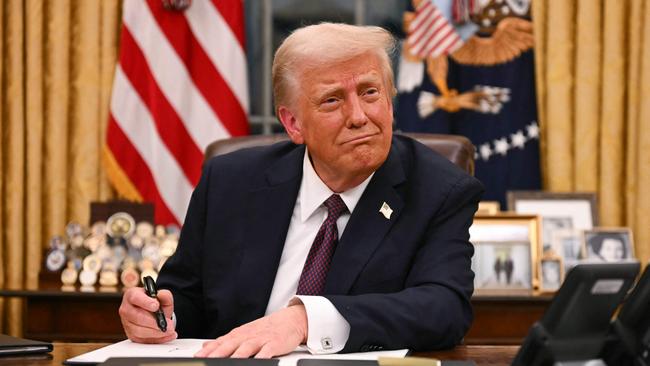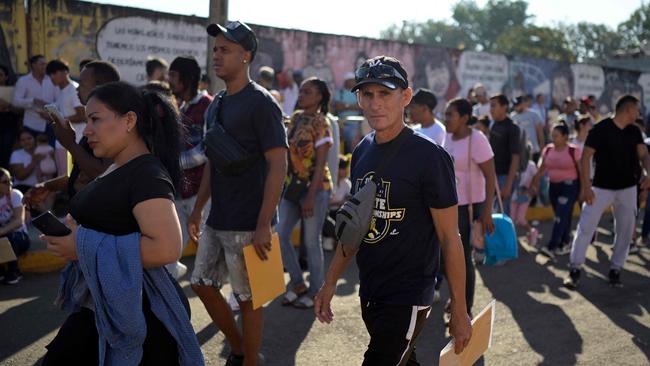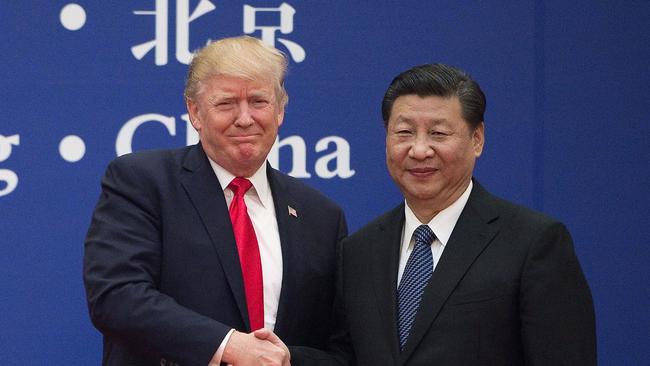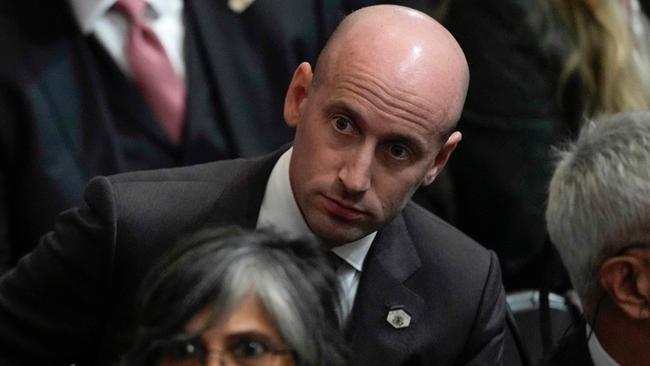Trump signs executive orders focused on the border, energy
Incoming president called for review of economic ties with China, trade deficits and unfair currency policies.
President Trump signed executive orders to overhaul border and energy policies and end diversity programs across the federal government, unwinding signature Biden administration policies on the first day of his second term.
Trump’s immigration plans include ending birthright citizenship, deploying troops and declaring a national emergency at the southern border as well as ending asylum by speeding deportations, Trump said.
“With these actions, we will begin the complete restoration of America and the revolution of common sense,” Trump said Monday in his inaugural address at the Capitol. At a rally later at Capital One Arena, Trump rescinded 78 Biden-era executive actions and signed other orders as thousands of supporters cheered.

Trump and his staff gave few details on the orders. Some will likely face legal challenges. The Pentagon will determine the specifics of a troop deployment that Trump wants to begin within weeks, a person familiar with the plans said.
Trump considered trying to end birthright citizenship in his first term. Constitutional scholars and civil-rights groups have said a change to birthright citizenship can’t be done through executive action and would require amending the Constitution.
Trump also plans to revive a policy called Remain in Mexico, which requires migrants seeking asylum at the southern border to live in northern Mexican border cities during U.S. court proceedings. Mexico would need to agree to take the migrants. He plans to resume construction of a border wall, designate cartels as foreign terrorist organizations and pause refugee resettlements for four months.

Legal pathways the Biden administration created for migrants who would otherwise have crossed illegally immediately ended after Trump took office. CBP One, an app and website offering 40,000 appointments a month, said it was no longer available and existing appointments were canceled.
Trump also signed orders and memorandums to cut regulations around energy production and reduce inflation. They include eliminating former President Joe Biden’s climate regulations tied to electric-vehicle production, Trump said. Another order focused on bolstering energy production in Alaska, and Trump withdrew from the Paris Climate Accord.
Trump isn’t expected to implement new tariffs on Monday, but he plans to issue a memo directing federal agencies to evaluate trade policies and economic relationships with China and North American neighbors.
Trump also will direct federal agencies to alleviate persistent U.S. trade deficits and confront what he calls unfair trade and currency policies by other nations. He is expected to focus on China, Canada and Mexico, directing agencies to assess compliance with the U.S.-Mexico-Canada Agreement and a 2020 trade deal with China.
The absence of new tariffs he has pledged to implement during this term from the orders he planned to sign Monday offered a moment of relief to foreign leaders and demonstrates disagreement in the new administration on Trump’s trade agenda. Trump wanted to advance trade policies “in a measured way,” a senior policy adviser said.

Federal agencies will be instructed to study trade policies and recommend actions to Trump, the adviser said. In addition to trade deficits, unfair trade practices and currency manipulation, agencies will review policy on counterfeit goods and a tariff exemption for goods under $800, the adviser said, along with trade-and-tariff actions taken during Trump’s first term.
Some Trump nominees with more traditional trade views, such as Treasury secretary nominee Scott Bessent, have argued that his tariffs should exclude certain sectors, rather than being universal. More protectionist advisers, such as incoming deputy chief of staff for policy Stephen Miller, have urged Trump to declare a national emergency that would allow him to raise tariffs across the board, as he pledged during his campaign.
Trump also plans to ask agencies to evaluate the feasibility of an “External Revenue Service” -- a new federal agency Trump has floated to collect tariff revenue. How that agency would differ from U.S. Customs and Border Protection, which has held that responsibility for decades, isn’t clear.

In an order ending Diversity, Equity and Inclusion programs, Trump directed the Office of Management and Budget and Office of Personnel Management to help agencies eliminate any programs that hire or promote people based on characteristics including race or disability status.
“We will forge a society that is colorblind and merit-based,” Trump said in his address.
Another order ended federal recognition of people’s expressed gender identity, instead recognizing biological sex as defined by their reproductive organs at birth. That would require government-issued documents such as passports and visas to identify sex rather than expressed gender. It will direct agencies to ensure places including prisons and migrant shelters separate people by biological sex, not expressed gender.
Trump also signed orders establishing a temporary regulatory and hiring freeze except in essential areas and requiring federal employees to return to work in person.
Trump plans to rename the Gulf of Mexico and the highest mountain in North America, Alaska’s Denali, in executive orders. The Gulf of Mexico will be renamed the Gulf of America, and Denali will once again be called Mount McKinley, he said.
At the Capitol, Trump signed an order calling for flags to fly at full staff on future inauguration days. He had complained that flags would be at half-staff at his inauguration because of a proclamation by Biden to honor former President Jimmy Carter for a month after he died in December.
The Wall Street Journal

To join the conversation, please log in. Don't have an account? Register
Join the conversation, you are commenting as Logout